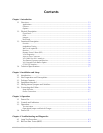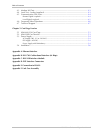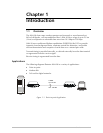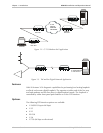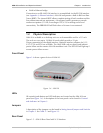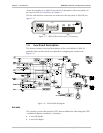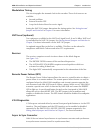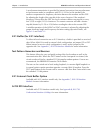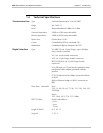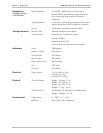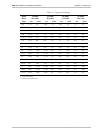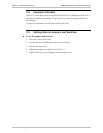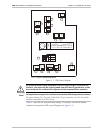
Chapter 1 Introduction ASM-20 Installation and Operation Manual
1-6 Functional Description 02-Aug-2005 10:47
A synchronous transmission is provided by internal conversion from asynchronous
to synchronous mode in compliance with ITU V.22 bis. In this standard, the
modem compensates for frequency deviation between the modem and the DTE
by adjusting the length of the stop bit of the async character. If the modem’s
frequency is lower than the DTE, the local converter deletes one stop bit in every
four (25%) or eight (12.5%) characters. The remote converter will add a shorter
stop bit (shorter by 12.5% or 25%) before sending the data to the remote DTE.
A suitable operation of the ASYNC to SYNC converter is selected by adjusting the
proper character length and frequency deviation setting (dip switch bank), see
Figure 2-3 and Table 2-2.
X.21 Buffer (for X.21 interface)
To allow tail-end connection on an X-21 interface, a buffer is provided on received
data. When ASM-20 is used in external clock configuration, set jumper JP2 to EXT.
When internal or receive clock configuration is used, set the jumper to the
opposite side. See Appendix C, IR-X.21B Interface Module for more information.
Test Pattern Generator and Receiver
This feature allows for easy and quick testing of the local modem as well as the
communication link. When the PATT button on the front panel is activated, the
circuit sends and checks a standard 511-bit pseudo random pattern. If errors are
encountered, the ERROR LED remains ON or blinks.
The test can be carried out in local analog loopback, in remote digital loopback or
in normal point-to-point operation opposite a remote ASM-20 modem. Press the
PATT push button on the remote unit or connect a Bit Error Rate Tester which uses
the standard 511-bit pattern.
X.21 External Clock Buffer Option
Available with X.21 interface model only. See Appendix C, IR-X.21B Interface
Module for more information.
G.703 DTE Interface
Available with G.703 interface model only. See Appendix B, IR-G.703
Codirectional Interface (64 kbps) for more information.




